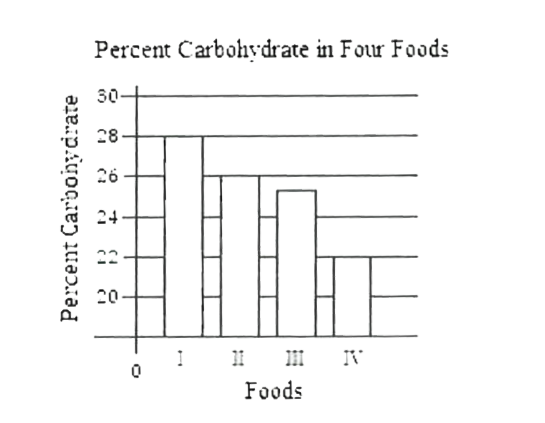
The bar graph above shows the percent of the daily recommended intake of calcium supplied by five different multivitamins, A, B, C, D and E, per pill. Products A and D are sold in bottles of 75 pills and cost $12 and $18, respectively. Products B, C and E are sold in bottles of 50 pills and cost $9.50, $10.25 and 15.50, respectively. Which of the five products supplies the greatest percentage intake of calcium per dollar?
A
A
B
B
C
C
D
D
Video Solution
Text Solution
The correct Answer is:C
Difficult: Hard
Category: Problem Solving and Data Analysis/ Rates, Ratios, Proportions, and Percentages
Strategic Advice: Whenever youre comparing multiple rates (percent calcium per pill and percent calcium per dollar), especially when reading data from a graph, consider orginizing the information in a table.
Getting to the Answer: The following table organizes the data provided by the graph and additional data needed to answer the question. Because there is more than one calculation to make per product, don't round any values until you reach the final column. (Note: product D is not one of the answer choices, so save yourself a bit of time by skipping D in the calculations.

According to the calculations in the table product C provides the greatest percentage of the daily-recommended intake of calcium per dollar, making (C) correct.
|
Topper's Solved these Questions
Similar Questions
Knowledge Check

Product (A) and (B) respectively in the above reaction areA B
B C
C D
D

The graph above shows the amount of carbohydrate supplied by four different foods, I, II, III, and IV, as a percentage of their total weights. The cost of 20 ounces of foods I, II, III, and IV, are $4.00,$3.50,$3.00and$2.75, respectively. Which of the four foods supplies the most carbohydrate per dollar?AIBIICIIIDIV

The product B and C are respectively:
View SolutionGive the products of the reactions given below.
b.
c.
d.
e.
View SolutionIn ABC, D and E are the mid-points of AB and AC respectively. Find the ratio of the areas of ADE and ABC .
View SolutionIn the following sequence of reactions, products A, B, C, D, and E are formed:

The structure of product (D) is:
View SolutionIn the following sequence of reactions, products A, B, C, D, and E are formed:

The structure of product (D) is:
View SolutionIn the following sequence of reactions, products A, B, C, D, and E are formed:

The structure of product (C) is:
View Solution


 , Product B and C are respectively :
, Product B and C are respectively :